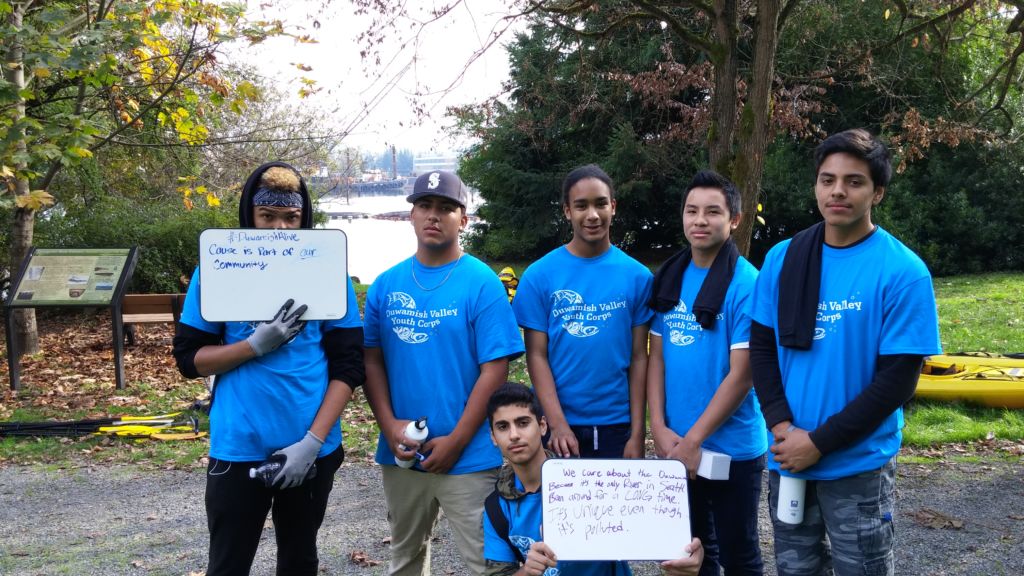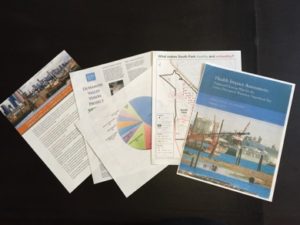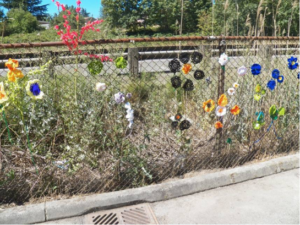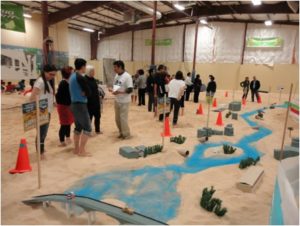What does it mean when Duwamish River Cleanup Coalition/Technical Advisory Group (DRCC/TAG) says that our work is driven and guided by community? This could just mean that we look at some neighborhood plans or host a public comment meeting to determine if the path we are on is the right one –- but in our work, this is often just the first step.
Instead, DRCC/TAG takes the time and energy to build relationships, listen to the communities’ interests and needs, and collaborate with them to develop action plans that focus on empowering their voices and actions. This, in part, has enabled DRCC/TAG to leverage a $60,000 EPA Urban Waters Small Grant into close to $1.5 million invested in Duwamish Valley community priorities. Taking action on these priorities improves the health of the community and the urban waters that flow through them. This includes increasing tree canopy (currently at 4%), expanding accessible green space (currently at 40 square feet in comparison to the citywide average of 387 square feet), picking up litter and removing graffiti, reducing exposure and sources of air pollution (the neighborhood includes a disproportionate number of polluting industries and is surrounded by three major highways), and building the capacity of the youth and broader community to be long-term stewards of their neighborhood.
The Story of Community Engagement and Community Priorities
The Duwamish Valley, which includes the neighborhoods of South Park and Georgetown, is exposed to multiple environmental justice concerns and includes a high percentage of susceptible or vulnerable populations –- including 42% foreign-born, 70% non-white minorities, and 71.7% living below the 200% Federal Poverty Line, the highest percentage of any health reporting area in King County. In addition, the life expectancy of these neighborhoods is a full eight years shorter than the City of Seattle and King County averages (Just Health Action and DRCC/TAG, 2013)
Since our founding, DRCC/TAG has focused on ensuring these communities were meaningfully involved in shaping and implementing the Superfund cleanup of the Duwamish River. This deep work with the community spread beyond the Superfund site, as DRCC/TAG began understanding other priorities of the community.
To better capture the communities’ broader vision for the Duwamish Valley, DRCC/TAG convened more than 500 diverse community members to create a Duwamish Vision Plan and Map in 2009. In this process, the community identified a “healthy community” as their main goal, leading to the publication of both the Cumulative Health Impacts Analysis (CHIA, published by Just Health Action and DRCC/TAG, 2014) and the Health Impact Assessment of the Proposed Cleanup Plan for the Duwamish River Superfund Site (HIA published by University of Washington School of Public Health with Just Health Action, and DRCC/TAG, 2014). The information captured in these publications was informed by a diverse group of community members, organizations, businesses, and other stakeholders engaged through surveys, focus groups, interviews, community asset mapping, and one-on-one conversations.
DRCC/TAG’s current Community Health program, established in 2014, grew out of these publications, focused on taking action on and continuing to define community priorities. In addition to a project solely focused on tackling air pollution (the communities’ number one priority), this program includes the Healthy Rivers/Healthy Communities project.
Delving into Healthy Rivers/Healthy Communities Project
The Healthy River/Healthy Communities project, funded through an Urban Waters Small Grant, is aimed at taking action on community revitalization priorities that result in improved urban waters. DRCC/TAG collaborates with communities and decision-makers to accomplish these goals, specifically through the official project partners and the Community Action Team or CAT.
The official project partners are a diverse set of official project partners representing federal, state, and local decision makers – including organizations, government, and academia. These partners provide connections, ideas, and, at times, resources to address community-identified priorities.
However, the most important partners in this process are those involved in the CAT. The CAT is a group of community members and business owners representing the language, ethnic, and socio-economic diversity of the Duwamish Valley. Each year, the CAT is convened to review identified priorities and develop action plans for what they consider to be the top priorities for the coming year. Each time the CAT meets, they are compensated for their time and expertise.
Through this process, the community works together to develop project details – including what community organization could take the lead to the specific objectives that the project might accomplish. Community members then work with DRCC/TAG and the selected fiscal sponsor to develop grant applications and budgets.
This process has resulted in over 10 grant submissions to the Duwamish River Opportunity Fund and countless other efforts in a three-year period. Those projects that were successfully funded continue to make a consistent difference in the community – even after the funding was used. Take the Happy Trail, a project funded in 2014 through the Duwamish River Opportunity Fund (DROF). The 8th Ave Trail in South Park, Seattle is a trail that should be heavily used—it connects two different pieces of the neighborhood—including the local elementary school, the public library, the community center, and more. But it wasn’t – instead youth went the long way around, avoiding needles, encampments, and overgrown weeds.
In partnership with the local Seattle Parks Foundation and others, this trail transformed from the “Scary Trail” into the “Happy Trail” (dubbed such by the local youth). While it needs constant care, the community-driven nature of the project ensures that is also a place the community is now invested in and discusses regularly. And the youth involved want to ensure it stays a place that they can go to!
Check out some of the projects that resulted from this process:
- The Duwamish Valley Youth Corps – this 12-week training program for Duwamish Valley youth has served close to 150 youth!
- Georgetown Urban Farm and Food Forest
- Duwamish Tree Canopy Enhancement project
- Duwamish Tribe’s Traditional Native Food Program
- And more!
The Future Work of Community Priorities
In addition to continuing to work on the ground with community members to take action on community priorities, we are also working to ensure there are transparent systems of accountability for how local government and decision-makers are investing and taking action in the Duwamish Valley. This includes deepening the understanding of community-identified priorities as well as ensuring that equity is core to these investments. In addition, it includes building better connections between the communities and decision-makers to continuing informing and updating community environmental and health priorities.
This Urban Waters Small Grant has enabled the community’s voice and energy to be the driving force for positive and sustainable impact on environmental and health concerns. We are excited to continue to work with the community and make space for their voice to shape their future!
For more information, contact Hannah Kett, Development and Communications Manager, DRCC/TAG – Hannah@duwamishcleanup.org or 206-359-1774






